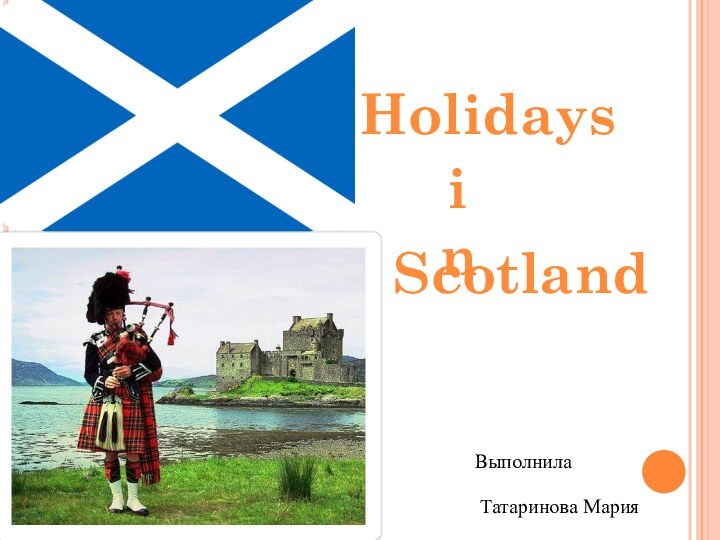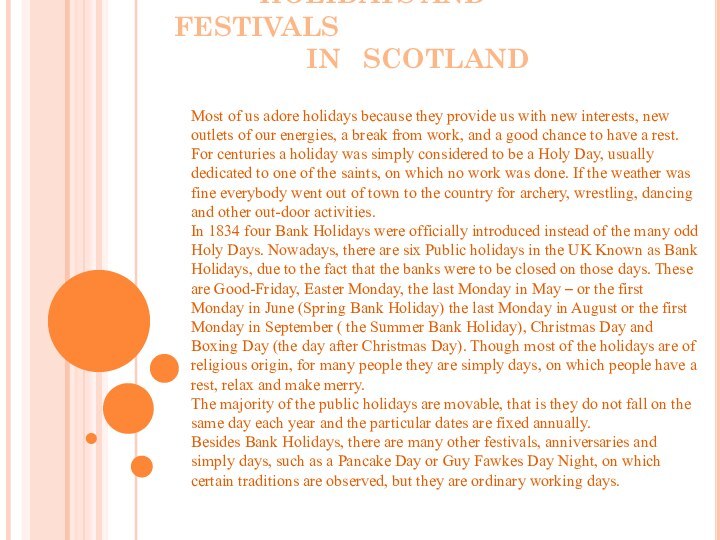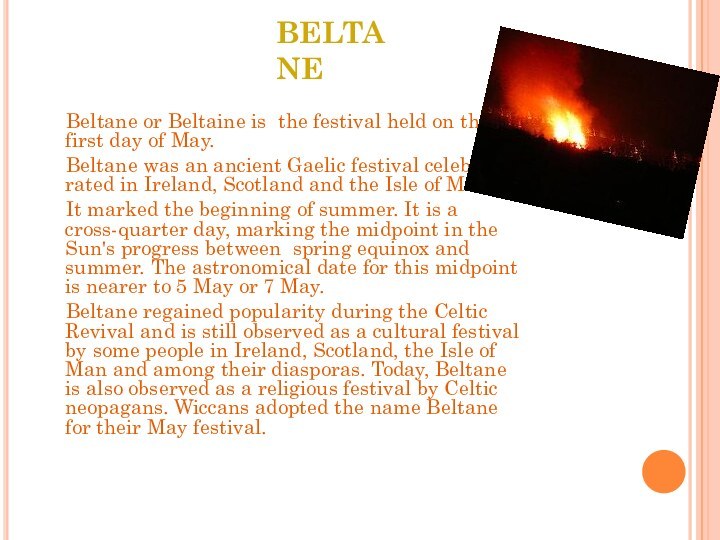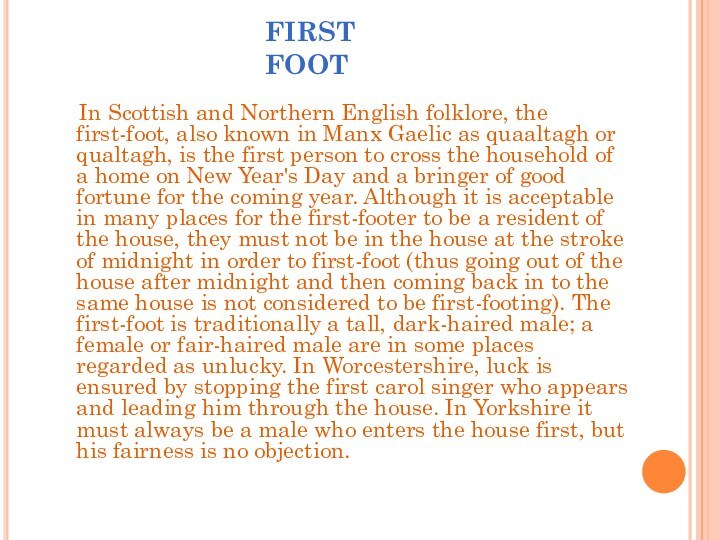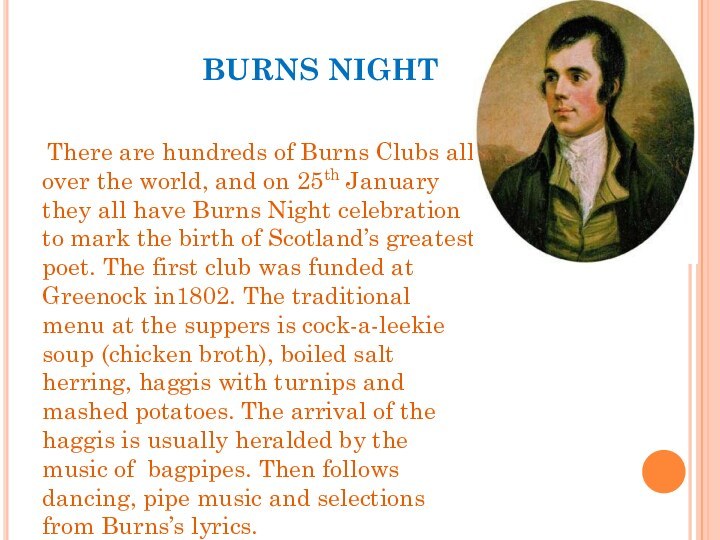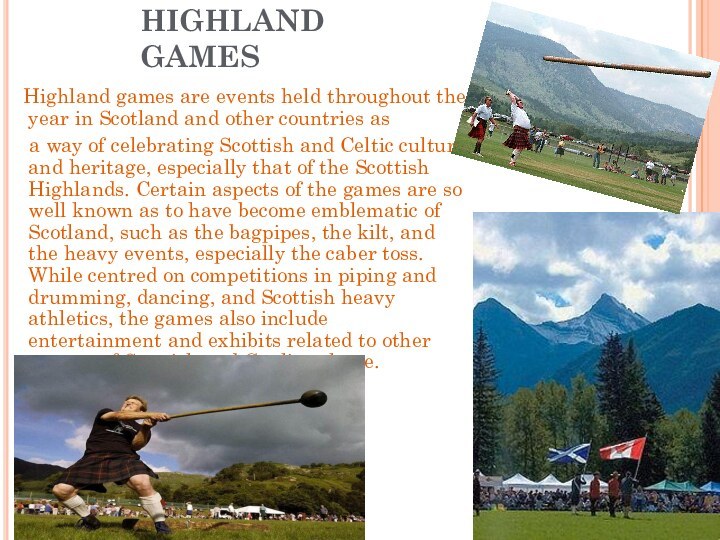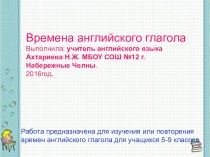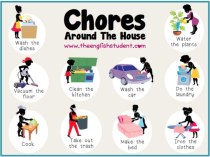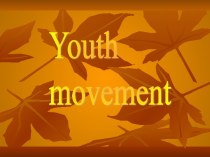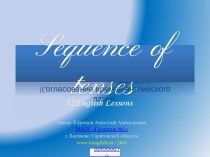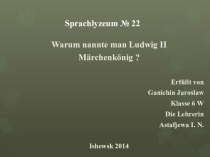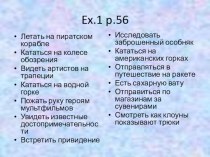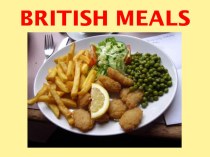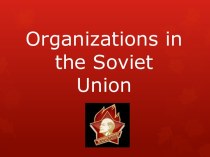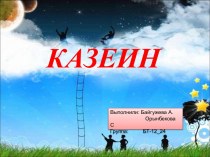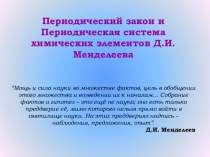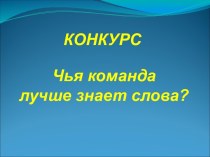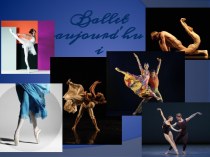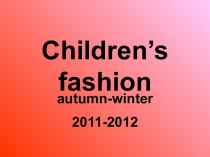FESTIVALS
IN SCOTLANDMost of us adore holidays because they provide us with new interests, new outlets of our energies, a break from work, and a good chance to have a rest.
For centuries a holiday was simply considered to be a Holy Day, usually dedicated to one of the saints, on which no work was done. If the weather was fine everybody went out of town to the country for archery, wrestling, dancing and other out-door activities.
In 1834 four Bank Holidays were officially introduced instead of the many odd Holy Days. Nowadays, there are six Public holidays in the UK Known as Bank Holidays, due to the fact that the banks were to be closed on those days. These are Good-Friday, Easter Monday, the last Monday in May – or the first Monday in June (Spring Bank Holiday) the last Monday in August or the first Monday in September ( the Summer Bank Holiday), Christmas Day and Boxing Day (the day after Christmas Day). Though most of the holidays are of religious origin, for many people they are simply days, on which people have a rest, relax and make merry.
The majority of the public holidays are movable, that is they do not fall on the same day each year and the particular dates are fixed annually.
Besides Bank Holidays, there are many other festivals, anniversaries and simply days, such as a Pancake Day or Guy Fawkes Day Night, on which certain traditions are observed, but they are ordinary working days.
